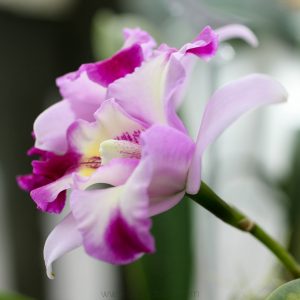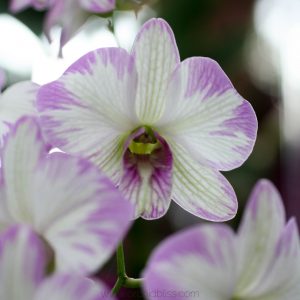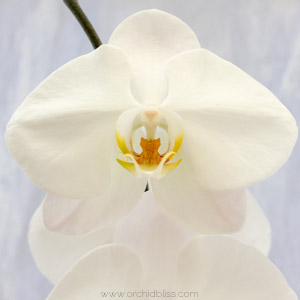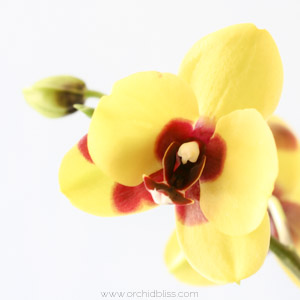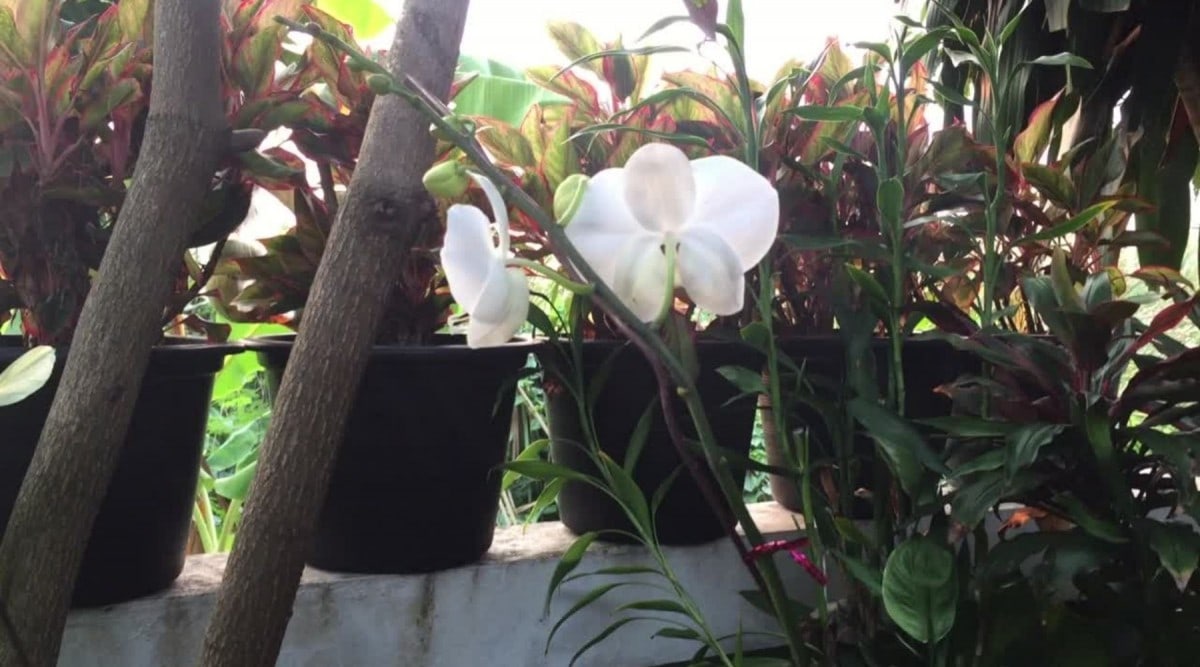
Orchids are beautiful plants that can light up any room in the house. Unfortunately, some people have a hard time keeping them healthy and blooming. This usually happens because plant owners don’t know how to adjust the light their orchids get.
Most orchids can’t be in direct sunlight, and they’ll get sunburned quickly. They mostly grow on the ground in dense jungles or attach themselves to rocks and trees in the wild. Trees usually protect them from direct sunlight, so they’re used to getting filtered, indirect light.
Read on to learn about orchids’ light requirements and how to protect them from drying out.
What You Should Know About Orchid Lighting

Light Duration
First and foremost, find a place that gets at least three hours of sunlight during the day. Depending on the orchid species, you may need more sunlight.
Keep in mind that light duration will change seasonally. So, in the winter, you may need to move the orchid closer to the windows because the days get shorter for them to get more sunlight.
You won’t have this problem if you use an artificial lighting system for your plants. But remember, keeping the lights on 24/7 won’t help your plants grow. It’ll even negatively affect them because plants need the dark to complete the photosynthesis cycle. Installing a timer for the lights helps you save energy and keeps your plants healthy.
Proper lighting is essential for orchid varieties that use light duration as an indication of when to bloom. Some have evolved to bloom during autumn when the day shortens, and some during spring.
Light Intensity
Light intensity is the next important factor when it comes to orchids. However, don’t replace light duration with intensity. In other words, an hour of harsh light doesn’t have the same effect as a few hours of indirect sunlight by a window. Intense light can burn your plants.
Light Quality
Every light source produces red, blue, and green light spectrums. The specific amount of spectrums each source produces defines its light quality. All photosynthetic plants absorb red and blue lights while reflecting green. Orchids use blue light to grow and red light to produce flowers.
You don’t need to worry about light quality if you keep your orchids outside or in a greenhouse because they get full light from the sun. Fluorescent lights and LED light bulbs can both emit the full spectrum that orchids need.
However, some windows act as a barrier to ultraviolet light, and not all artificial light bulbs can provide the full spectrum. Also, some sunrooms with colored glass can block the essential spectrums for your orchids.
Is Your Orchid Getting Enough Light?
Your orchid’s leaves will turn dark green if it’s not getting enough light. And it won’t bloom in a dimly lit room.
A healthy orchid has bright green leaves that are upright and firm. Producing flowers needs energy, so if it presents flowers with the right color and size in the right season, it’s getting sufficient light.
On the other hand, if your orchid is exposed to extremely bright light for an extended period, its leaves will start to turn yellow. Direct sunlight will turn the leaves completely pale at first, and then brown spots start to appear on the leaves.
You need to move your plant before the damage becomes irreversible. To see whether your orchid is getting too much light, feel its leaves. If they’re noticeably warmer than the surrounding air, your hunch is right!
If limp orchid leaves are a problem for your orchids download my free cheat sheet on how to prevent limp leaves and rotten roots. Click here for the super helpful cheat sheet.
How To Measure the Light
Use a Light Meter
The most precise way to measure light is by using a light meter or lux meter. This method is effective if you keep plants all over the house or have problems with your plants. You can also download a light meter app on your phone. They’re either free or very cheap.
Do the Hand Method
On a clear day, around the afternoon, when the sunlight is the brightest, position yourself between your plant and the light source. Place your hand about 10 or 12 inches from the orchid’s leaves and look at the shadow it casts.
If the shadow is small to non-existent, then your orchid isn’t getting enough light. If there’s a gray and fuzzy shadow on the leaves, the light intensity is medium. Some orchid varieties like Phalaenopsis or Paphiopedilum can thrive in this situation.
Lastly, if you see a very sharp and dark shadow, your orchid is getting bright light. Most orchids need this amount of sunlight for healthy growth.
How to Prevent Sunburn in Orchids

1- Place the Orchid by the Right Windows
Each window in the house gets a different amount of light during the day. The sun rises from the east and sets in the west, east. So, west-facing windows get the most light. But morning light is usually more subtle so that it won’t hurt the orchids. North and east-facing windows are the best spots for keeping orchids.
You can also use sheer curtains to block some of the light intensity if your windows get too much light.
2- Relocate the Orchid
If the sun shines too strongly during the summer, try relocating your orchid. Move it away from the window into the room’s center, and then gradually bring it closer to the window each day. Once you get to the window, move it back to the center. This way, your orchid will get plenty of sunlight without getting sunburnt.
3- Install a Shade House or Glass House
If you want to keep your orchids outside in your garden, you can install a shade house or glasshouse to protect them from the harsh sun. These protective houses also reduce the temperature to a proper level for orchids. Glass houses can protect orchids from rain and snow in winter and fall.
4- Use a Shade Cloth
There are a variety of fabrics with different grades that emit a certain amount of sunlight. You can choose them considering your orchid’s needs. Shade cloths can go over a frame or a glasshouse. You can remove them during winter when the sun intensity decreases.
5- Move the Orchids Outside Gradually
Some orchid owners bring their plants inside the house during cold seasons and want to move them outside again during the pleasant days of summer. The humidity, fresh air, and sunlight can benefit your orchid, but they get sunburnt easily, especially after spending a long winter away from direct sunlight.
You need to introduce them to the sun gradually. First, increase the light intensity by moving them closer to the window. After a couple of days, put them under an awning on the balcony, in a covered patio, or under trees that can provide shade. They should get sunlight for a short while.
After getting used to the light, you can move them to a spot where they get sunlight before 10 am and after 2 pm. The midday sun is harsh for most orchids.
Watch them during this process and if you notice warm leaves or brown spots, move them back to a shaded area.
Conclusion
To make sure your orchid is getting the right amount of light, use a light meter, a light meter app, or the hand method.
Protect your orchid from too much direct sunlight using curtains, shade houses, glasshouses, and shade cloths. If you want to move them outside, give them a chance to gradually get used to the sun.
If you manage to adjust the light duration, intensity, and quality for your orchids, they’ll bloom more beautifully than ever. They’ll have green and lush leaves, adding color and life to your home.
Related articles:
Sources
- Just add ice: 4 Tips for a Sunburn-Free Orchid this Summer.
- Just add ice: Orchids Like Indirect Sunlight.
- C-mac: 5 common mistakes to avoid when growing your orchids indoors
- The old farmer’s almanac: GROWING ORCHIDS
- About orchids: Light
- Gardeners supply company: How to Grow Orchids
- Orchid republic floral boutique: ORCHID CARE: IS IT OK TO PUT ORCHIDS OUTSIDE IN THE SUMMER?
- Wikihow: how to grow orchids outside?
- Orchid bliss: HOW TO GIVE YOUR ORCHIDS THE RIGHT LIGHT
- American orchid society: Light, the Key to Successful Blooming
- Orchids made easy: Orchids Care & Light: How Much is Enough?
- SF gate: Can Too Much Light Hurt Orchids?

